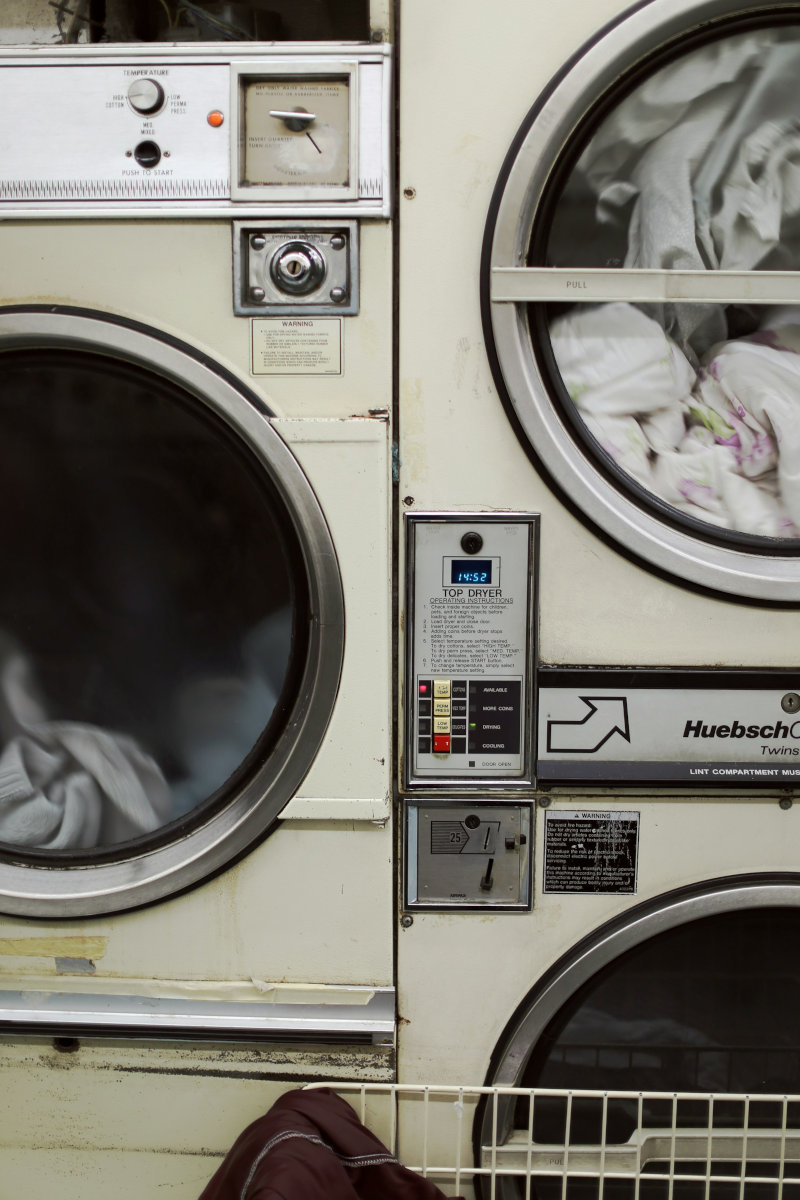Laundry Tips
Doing laundry might seem straightforward, but a few smart moves can really make a difference in how your clothes look, feel, and last. Here are some tips to help you master the art of laundry:
Sorting Like a Pro
Proper sorting is the foundation of good laundry habits. It prevents colors from bleeding and ensures each type of fabric gets the care it needs.
- Separate by Color:
- Whites: This includes white shirts, underwear, socks, and bedding. Washing them together with colored items can lead to dinginess.
- Lights: Pale yellows, pinks, blues, and grays should be grouped together.
- Darks: Black, navy, dark red, and other deep hues should be washed separately to prevent dye transfer.
- Separate by Fabric Type and Care Instructions:
- Delicates: Lingerie, silk, lace, and items labeled "hand wash" or "gentle cycle" need extra care. Consider using a mesh laundry bag for added protection.
- Heavy Fabrics: Jeans, towels, and sturdy cotton items can usually withstand a more rigorous wash cycle.
- Lint Producers vs. Lint Catchers: Wash items that produce a lot of lint (like towels and fleece) separately from those that attract it (like corduroy and microfiber) to avoid unwanted fuzz.
Pre-Treating Stains for Success
Addressing stains before they go into the wash can significantly increase your chances of removing them completely.
- Act Fast: The sooner you treat a stain, the better. Fresh stains are much easier to remove than set-in ones.
- Identify the Stain: Different types of stains respond best to different treatments. For example:
- Protein-based stains (blood, dairy): Cold water is key. Hot water can set these stains.
- Grease stains: Dish soap can be surprisingly effective at breaking down grease.
- Ink stains: Rubbing alcohol or specialized ink removers might be necessary.
- Fruit and vegetable stains: Try soaking in cold water or using a stain remover specifically designed for these types of blemishes.
- Apply Treatment Carefully: Gently blot the stain instead of rubbing, which can spread it. Apply the pre-treatment according to the product instructions.
- Soaking Stubborn Stains: For particularly tough stains, consider soaking the garment in cool water with a stain remover for a few hours or overnight before washing.
The Right Detergent Dosage
Using the correct amount of detergent is crucial for clean clothes and a healthy washing machine.
- Read the Label: Detergent manufacturers provide guidelines based on load size and water hardness. Follow these recommendations.
- Avoid Overloading: Using too much detergent can leave residue on your clothes, making them feel stiff and attracting more dirt. It can also lead to excessive suds that may not rinse out properly.
- Consider Your Water Hardness: Hard water can make it more difficult for detergent to lather and clean effectively. You might need to use slightly more detergent if you have hard water.
- HE Machines: If you have a high-efficiency (HE) washing machine, be sure to use detergent specifically formulated for HE machines. These detergents produce fewer suds.
Washing Wisely
Choosing the right wash cycle and temperature can prolong the life of your clothes and ensure they come out clean.
- Water Temperature Matters:
- Cold Water: Best for most everyday laundry, especially delicates and bright colors. It saves energy and helps prevent fading and shrinking.
- Warm Water: A good compromise for moderately soiled clothes and whites when you want a bit more cleaning power than cold water.
- Hot Water: Ideal for heavily soiled whites, bedding, and items that need to be sanitized. Be cautious, as hot water can cause shrinkage and fading.
- Select the Appropriate Cycle:
- Normal/Regular: For everyday loads of moderately soiled clothes.
- Delicate/Gentle: For lingerie, silk, and other fragile items. This cycle uses lower agitation and spin speeds.
- Permanent Press: For wrinkle-resistant fabrics. It uses a warm wash and a slow spin to minimize wrinkling.
- Heavy Duty: For sturdy and heavily soiled items like jeans and work clothes.
- Don't Overload the Machine: Give your clothes enough room to move freely in the water. Overloading can prevent proper cleaning and may damage your washing machine.
Drying with Care
How you dry your clothes is just as important as how you wash them.
- Read Care Labels: Always check the garment's care label for drying instructions. Some items should be air-dried.
- Lower Heat is Kinder: High heat can shrink, fade, and damage fabrics. Opt for lower heat settings whenever possible.
- Separate Loads by Weight: Dry lightweight items separately from heavy ones to ensure even drying. Heavy items take longer and can over-dry lighter items.
- Use Dryer Balls: Wool or plastic dryer balls can help to separate clothes, improve air circulation, reduce drying time, and soften fabrics naturally.
- Don't Over-Dry: Over-drying can make clothes stiff and cause shrinkage. Remove clothes from the dryer as soon as they are dry.
- Air Drying: When in doubt, or for delicate items, air drying is always a safe option. Lay flat on a clean surface or hang on a drying rack away from direct sunlight.
Machine Maintenance Matters
A clean and well-maintained washing machine and dryer will perform better and last longer.
- Clean Your Washing Machine Regularly: Run an empty cycle with hot water and a washing machine cleaner or a cup of white vinegar every few months to remove detergent buildup and mildew. Wipe down the door seal and dispenser drawers.
- Clean Your Dryer Lint Trap After Every Load: A clogged lint trap is a fire hazard and reduces drying efficiency.
- Check Dryer Vents: Periodically inspect and clean your dryer vent to ensure proper airflow.
By following these laundry tips, you can keep your clothes looking their best, extend their lifespan, and make the chore a little less daunting. Happy washing!

